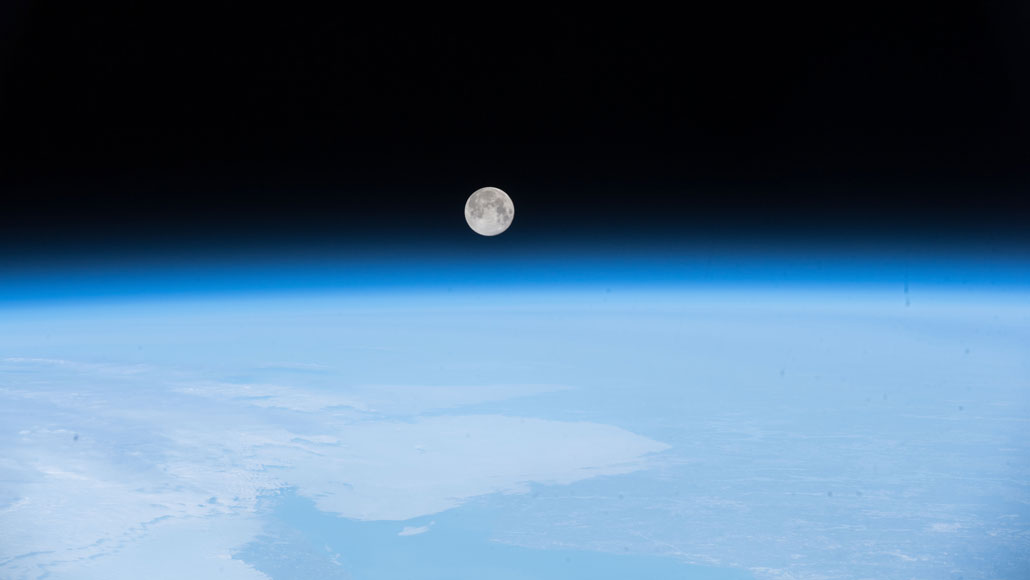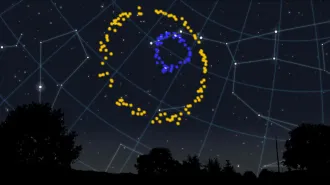
New measurements of the moon’s light could make Earth’s celestial sidekick more reliable for double-checking satellite observations.
NASA
- More than 2 years ago
The lunar dark side may be the moon’s more mysterious face, but there’s something pretty basic scientists still don’t know about the bright side — namely, just how bright it is.
Current estimates of the moon’s brightness at any given time and vantage point are saddled with at least 5 percent uncertainty. That’s because those estimates are based on measurements from ground-based telescopes that gaze at the moon through the haze of Earth’s atmosphere.
Now, scientists have sent a telescope beyond the clouds on a high-altitude airplane in hopes of gauging the moon’s glow within about 1 percent or less uncertainty, the National Institute of Standards and Technology reports in a Nov. 19 news release.
Knowing the exact brightness of Earth’s celestial night-light could increase the reliability of data from Earth-observing satellites that use the moon’s steady glow to check that their sensors are working properly. Those satellites keep tabs on things like weather, crop health and dangerous algal blooms.
The new moonbeam-catching mission, called the Airborne Lunar Spectral Irradiance Mission or air-LUSI for short, performed a series of demonstration flights from late November 12 (right after a full moon) to the wee hours of the morning on November 17, NASA said in a Nov. 14 news release. During each flight, a telescope was bathed in moonlight for half an hour while riding on the wing of a NASA airplane about 21 kilometers above ground — around twice the cruising altitude of a commercial airliner.
“When we’re up there, the atmosphere is not an issue,” says air-LUSI team leader Kevin Turpie, a remote sensing scientist at the University of Maryland, Baltimore County. With the plane flying above about 90 percent of the atmosphere, “it’s getting much closer to viewing the moon as you would from space.”
Researchers can’t just launch a satellite up into space to get a clear view of the moon, because that probe would be “basically facing the same problems as all the other Earth-observing satellites” that aim to use the moon’s brightness to check their function, Turpie says. Namely, instruments degrade in the harsh environment of space. By sending air-LUSI on a short flight rather than into orbit, scientists can manually examine the instrumentation after landing to make sure it continued operating correctly throughout its observations.
Turpie’s team is still analyzing results from its initial observing run. But if the air-LUSI measurements are as accurate as expected, observations from those and future flights could be combined with ground telescope data to create a more accurate model of the moon’s appearance at various times and locations. Shaving uncertainty about the moon’s brightness down to about 1 percent or less would require making air-LUSI observations during different phases of the moon over at least three years, Turpie estimates.
In the future, moonlight-seeking experiments that fly even higher than air-LUSI, potentially on high-altitude balloons, may help measure moonlight with even greater accuracy, says lunar calibration researcher Hugh Kieffer. He is not involved with air-LUSI but has modeled the moon’s brightness using ground telescope observations for the U.S. Geological Survey.
By pointing a satellite at the moon and comparing its observations with the moon’s true brightness, scientists can test whether the satellite is seeing things correctly — and tweak data coming from it to compensate for any errors. It’s difficult to run the same kind of test using other celestial objects as reference lights, because “stars are too dim and pointy, and the sun is too bright,” Kieffer says.
More advanced models of the moon’s brightness could not only help clean up data from current Earth-facing satellites, but also refine observations from past satellites that peered at the moon.







